ZHCSFA6B June 2016 – July 2018 CC1350
PRODUCTION DATA.
- 1器件概述
- 2修订历史记录
- 3Device Comparison
- 4Terminal Configuration and Functions
-
5Specifications
- 5.1 Absolute Maximum Ratings
- 5.2 ESD Ratings
- 5.3 Recommended Operating Conditions
- 5.4 Power Consumption Summary
- 5.5 RF Characteristics
- 5.6 Receive (RX) Parameters, 861 MHz to 1054 MHz
- 5.7 Receive (RX) Parameters, 431 MHz to 527 MHz
- 5.8 Transmit (TX) Parameters, 861 MHz to 1054 MHz
- 5.9 Transmit (TX) Parameters, 431 MHz to 527 MHz
- 5.10 1-Mbps GFSK (Bluetooth low energy) – RX
- 5.11 1-Mbps GFSK (Bluetooth low energy) – TX
- 5.12 PLL Parameters
- 5.13 ADC Characteristics
- 5.14 Temperature Sensor
- 5.15 Battery Monitor
- 5.16 Continuous Time Comparator
- 5.17 Low-Power Clocked Comparator
- 5.18 Programmable Current Source
- 5.19 DC Characteristics
- 5.20 Thermal Characteristics
- 5.21 Timing and Switching Characteristics
- 5.22 Typical Characteristics
- 5.23 Typical Characteristics – Sub-1 GHz
- 5.24 Typical Characteristics – 2.4 GHz
- 6Detailed Description
- 7Application, Implementation, and Layout
- 8器件和文档支持
- 9机械、封装和可订购信息
5.23 Typical Characteristics – Sub-1 GHz
Unless otherwise stated, all performance figures represent an average over six typical parts at room temperature and with the internal DC/DC converter enabled.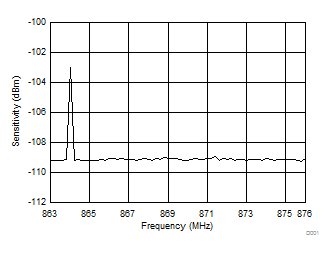
vs Frequency 863 MHz to 876 MHz
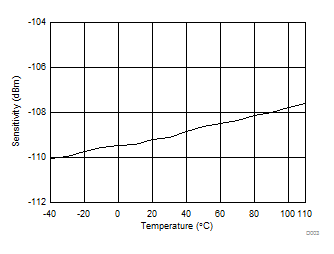
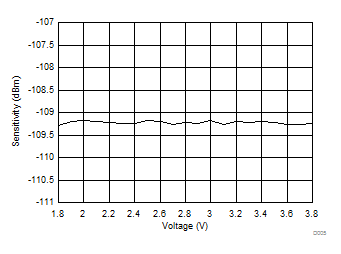
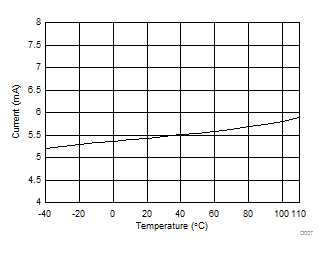
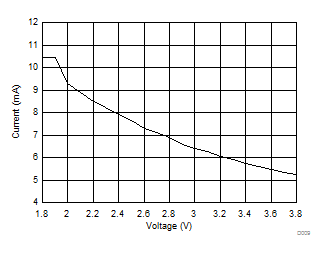
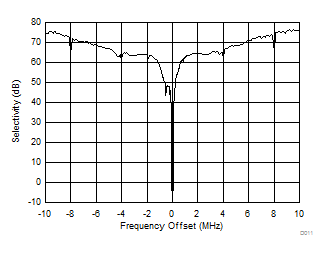
868 MHz, 3 dB Above Sensitivity Limit
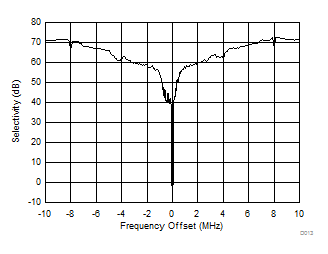
868 MHz, –96 dBm
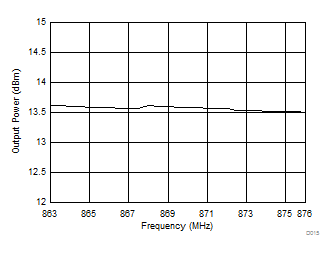
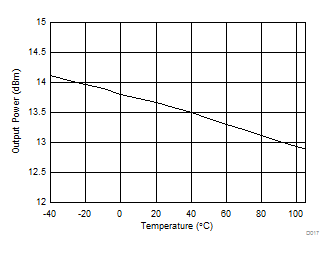
868 MHz
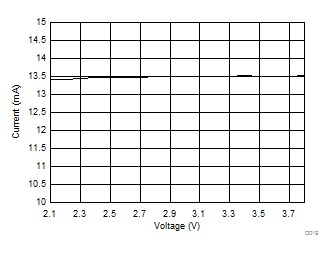
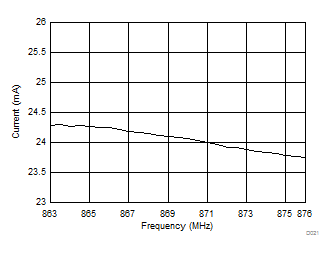
863 MHz to 876 MHz
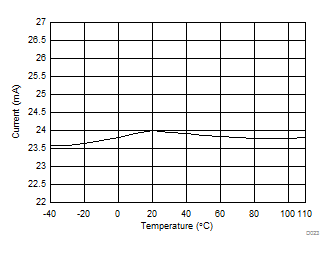
vs Temperature, 868 MHz
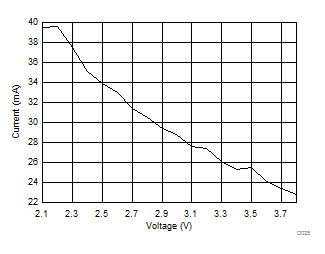
vs Voltage, 868 MHz
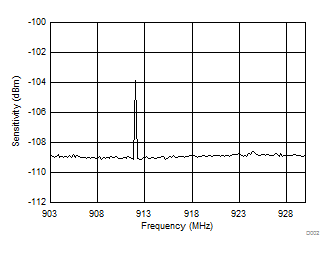
vs Frequency 902 MHz to 928 MHz
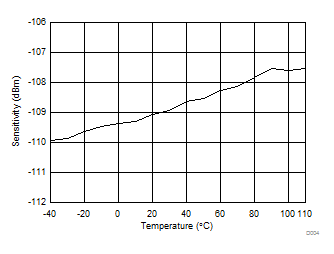
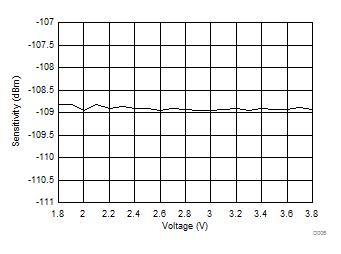
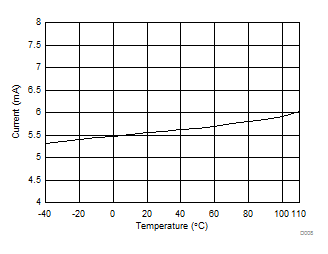
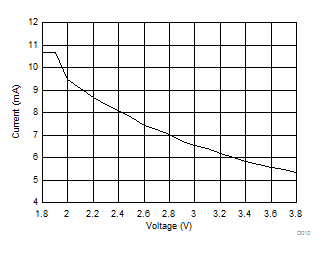
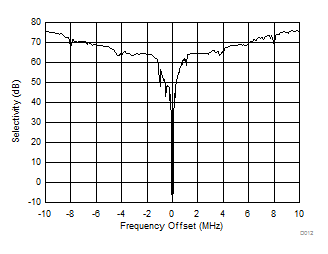
915 MHz, 3 dB Above Sensitivity Limit
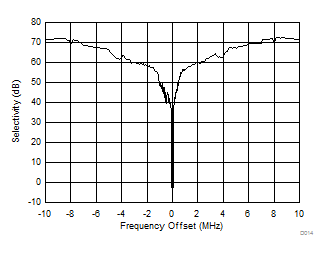
915 MHz, –96 dBm
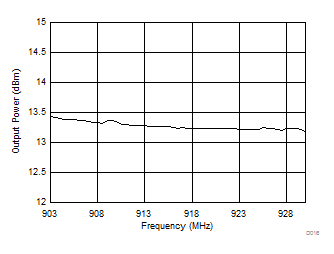
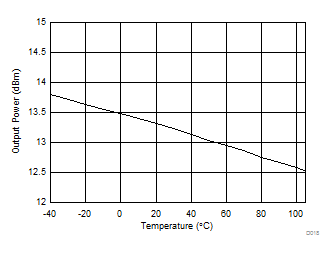
915 MHz
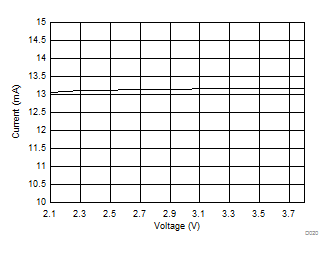
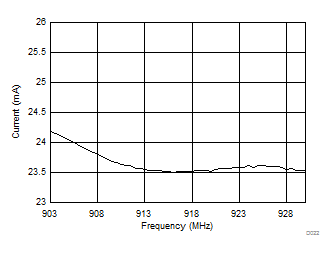
902 MHz to 928 MHz
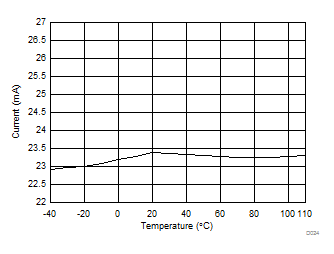
vs Temperature, 915 MHz
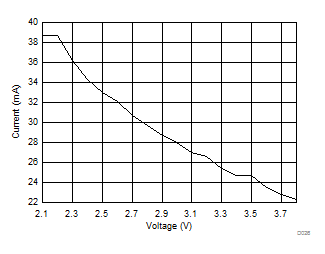
vs Voltage, 915 MHz
SPACER